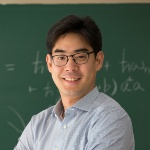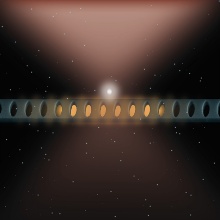Quantum Device Technology with Optical and Solid-State Systems
We develop novel quantum technologies based on various optical and solid-state systems. Available building blocks in our lab include photons in optical microcavities, spins (e.g., in quantum defects) in solids, and mesoscopic mechanical resonators. We focus on combining these systems to create hybrid quantum devices exhibiting all the excellent features of individual components. Our goal is to use these devices for real-world quantum sensing and information processing applications and fundamental research in quantum physics.
Hybrid Quantum Devices based on Mesoscopic Mechanical Resonators
We are particularly interested in exploring and exploiting the quantum behaviors of mesoscopic mechanical resonators. It is a subject of fundamental importance as it attempts to directly probe principles of quantum physics in unexplored mass and length scales. Harnessing mechanical devices at the quantum level is also technologically significant because it will allow for utilizing state-of-the-art mechanical sensing and signal processing technologies as new resources for quantum sensing and information processing. To find out more about this field, please have a look at Sungkun's earlier works (2016 - 2018) from the Publications page or read this review paper.
In Stuttgart, our group is developing a new type of hybrid optomechanical quantum device with potential quantum sensing applications in our minds. Central mechanical elements are levitated dielectric micro/nano-particles in an optical trap. An optically levitated particle is an excellent mechanical oscillator as major sources of friction (e.g., air, clamping) can be (almost perfectly) eliminated in a vacuum. For more information about the background, see the following articles:
- Chang et al., PNAS 107, 1005-1010 (2010)
- Romero-Isart et al., NJP 12, 033015 (2010)
- Delić et al., Science 367, 892-895 (2020)
We utilize and combine well-stocked, state-of-the-art technologies in optical trapping, quantum optics, and nanophotonics to achieve an unprecedented level of quantum control over the particle's motion. Check Sungkun's recent work to get some ideas. We will use the developed system for solving outstanding problems in applied sciences by enabling the detection of otherwise unseeable forces in various contexts. In the long run, we will use the platform to explore the boundary between quantum and classical worlds and to probe important questions in fundamental physics.
Other Interests
We are also keen on employing various other systems for quantum applications. For instance, we are interested in developing new ways to do cavity-QED with solid-state quantum emitters (e.g., SiV centers in diamond). We also plan to investigate methods to use acoustic phonons for mediating long-range, coherent interaction among solid-state spin qubits.
Contact

Sungkun Hong
Jun.-Prof. Dr.Tenure-Track Junior Professor




